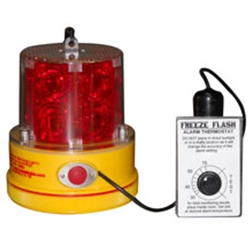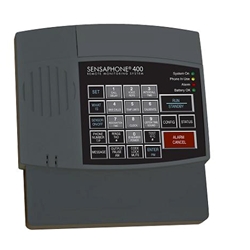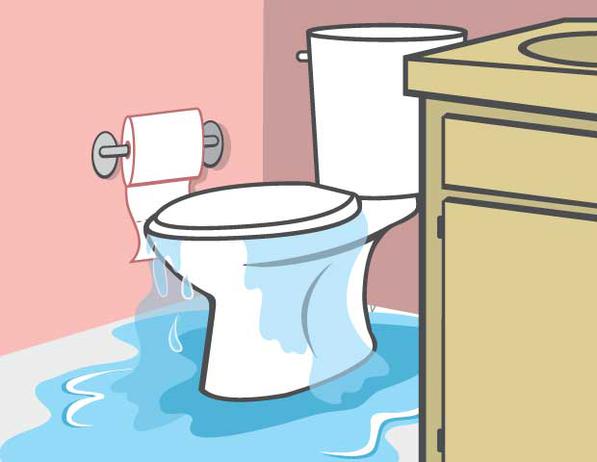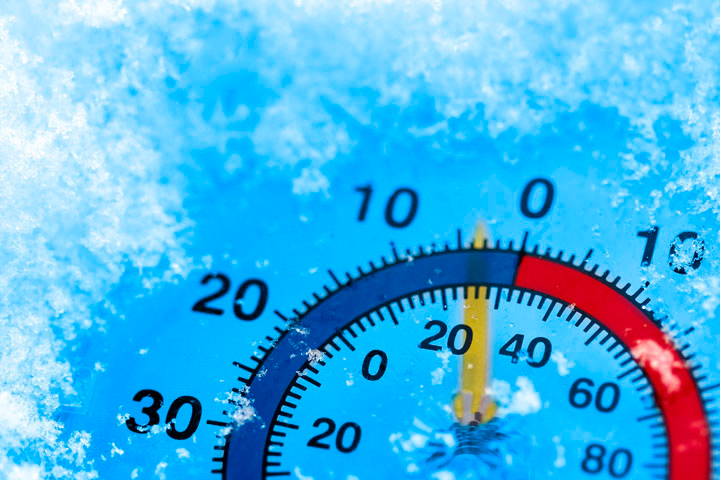 Falls arrival brings beautiful days filled with apple or pumpkin picking, watching the leaves change color and dramatic changes in temperature. A freeze alarm (also called a high/low temperature alarm) is one of the best ways to protect your home from costly damage caused by frozen pipes that leak and burst.
Falls arrival brings beautiful days filled with apple or pumpkin picking, watching the leaves change color and dramatic changes in temperature. A freeze alarm (also called a high/low temperature alarm) is one of the best ways to protect your home from costly damage caused by frozen pipes that leak and burst.
What is a Freeze Alarm?
A freeze alarm is a device that monitors the temperature inside your home and provides a warning if it dips dangerously low. For anyone who owns a house in a part of the country where winter brings bone-chilling cold, a freeze alarm is a must. And the perfect time to install one is now before the temperature drops. There are so many types of freeze alarms that choosing one can often be difficult or confusing. To help you decide which alarm is the best option for your home, just follow these five simple steps:
Step 1: Decide What Conditions You Want to Monitor
All freeze alarms monitor temperatures in your home and send an alert when the temperature has plummeted. Many models also accept optional sensors to monitor for a variety of other issues, such as power outages, water leaks or floods, smoke, motion and doors or windows left open. Decide what conditions you want to keep track of and look for freeze alarm models that monitor for them.
Step 2: Choose a Fixed or Adjustable Temperature Set Point
Basic freeze alarms typically have a factory-determined (or fixed) low temperature set point of around 45°F. The HomeSitter Temperature, Water, and Power Alarm is the most affordable multi-functional home monitoring system on the market for homes with a landline phone connection. It monitors either high or low temperature fixed at below 45°F or above 85°F, as well as power outages, water leaks and backup battery status. If you want to program the temperature set point to your own personal low or high, choose a freeze alarm with adjustable or high/low temperature set points.
Step 3: Select a Local or Call-Out Alert
There are two types of freeze alarm alerts: local and call-out. Local alerts, like the popular Freeze Flash Temperature Warning Light, use flashing red LED lights to alert neighbors or passers-by that temperatures inside your home are approaching freezing. For this type of alert to provide effective protection, you need people living nearby who you can count on to get in touch immediately if they see your alarm flashing.
If you don’t know your neighbors or your home is in a remote location, choose a call-out freeze alarm. The new TempAlarm Dialer Pro (which replaces the popular Deluxe FreezeAlarm) will use your existing phone line to call up to three phone numbers if the temperature gets too low or the power goes out.
Step 4: Pick A Preferred Communication Mode: Landline, Internet or Cell
It is important to pick a communication mode based on what is available or most convenient for you: landline phone, Internet/WiFi or cellular service.
Advanced phone-based models like the Sensaphone 400 Cottagesitter let you check in or adjust settings remotely. The most versatile landline-based freeze alarm around, the Sensaphone 400 has remote control capability that allows you to change telephone numbers, temperature set points, security codes and alert messages from anywhere. (Add a cellular terminal to communicate via a cellular network.)
If you have full-time internet access, the Temp Stick Wifi Temperature & Humidity Sensor is a no-fee, WiFi connected, battery 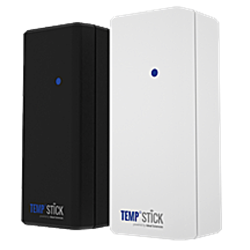 operated smart monitor that sends alerts to your phone or email the instant an important change in temperature or humidity is triggered. It will accurately monitor conditions 24/7 and you can view and update it from your Smartphone, tablet or PC. The La Crosse Online Temperature and Humidity Wireless Alert System is a fee-based online gateway for homes with full-time high-speed Internet and a wired router connection.
operated smart monitor that sends alerts to your phone or email the instant an important change in temperature or humidity is triggered. It will accurately monitor conditions 24/7 and you can view and update it from your Smartphone, tablet or PC. The La Crosse Online Temperature and Humidity Wireless Alert System is a fee-based online gateway for homes with full-time high-speed Internet and a wired router connection.
Cellular freeze alarms offer the advantage of continuing to operate even when extreme weather causes telephone lines to go down. For vacation homes that don’t have phone or Internet service during the off-season, the MarCELL Cellular Connected Monitoring System is a great solution. This full-featured system monitors the temperature and power status and sends text message, email or voice alerts to any of your devices using a cell phone signal (you now have a choice of carrier, AT&T or Verizon!)
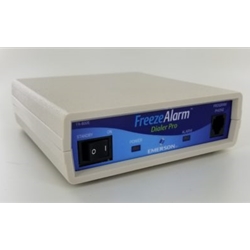 Step 5: Determine Alert Frequency and Messaging
Step 5: Determine Alert Frequency and Messaging
Most freeze alarms will call indefinitely until someone picks up and a response code is entered or the emergency condition is addressed. You will need to determine how many phone numbers you want the freeze alarm to call. A basic model like the FreezeAlarm Dialer FA-700 will call only one phone number. More advanced models can call three or more phone numbers, increasing the chances that someone will receive and respond to the alert. The best-selling FreezeAlarm Dialer Pro (which replaces the Intermediate Freeze Alarm), is a landline phone-based freeze alarm that calls up to three phone numbers and comes ready to monitor either high or low temperature (below 45°F or above 85°F). It also has a Quick Status Feature that allows you to call in and hear the current temperature, power and battery status.
Need More Help Making a Decision?
No matter which model you choose, a freeze alarm is one of the best investments you can make to help protect your home against frozen pipe damage. The five steps outlined above will help you narrow down the list of alarms that meet your requirements. If you still can’t decide which one is right for you, consult our handy Freeze Alarm Comparison Chart for an overview of todays most popular models, their features and functions. Or contact the technical experts at diycontrols.com.


